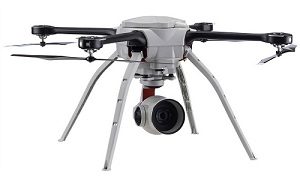
FLIR Systems has acquired Aeryon Labs, a leading developer of high-performance unmanned aerial systems (UAS) for the global military, public safety and critical infrastructure markets for $200 million.
Aeryon’s vertical takeoff and landing quad-copter airframes integrate multiple sensors, including FLIR thermal technology, to provide users with immediate high-resolution intelligence, surveillance and reconnaissance (ISR) capability, according to an announcement. Based in Waterloo, Ontario, Canada, and with offices in Denver and Salt Lake City, Aeryon Labs was founded in 2007 and is a leading designer and manufacturer of mission-focused Group 1 UAS solutions built around aircraft under 20 pounds.
Aeryon’s family of UAS are deployed by 20 militaries in more than 30 countries around the world, including the United States Department of Defense. Aeryon develops UAS solutions that include hardware, embedded software, ground control stations, sensors, software for flight operations, as well as supporting services for its global customers.
“The acquisition of Aeryon Labs reinforces our long-term strategy to move beyond providing sensors to the development of complete solutions that save lives and livelihoods,” says Jim Cannon, president and CEO of FLIR Systems. “This acquisition, coupled with our acquisition of Prox Dynamics in 2016, greatly increases our unmanned systems solutions capabilities, expanding beyond nano-UAS into Group 1 UAS solutions for military.
Aeryon Labs is now part of the FLIR Government and Defense Business Unit’s Unmanned Systems and Integrated Solutions division. FLIR’s management will discuss the strategic acquisition during its 2018 Q4 earnings call scheduled for Feb. 13. “As drone technology and its markets evolve, customers are seeking UAS as just one component of a broader solution,” says Dave Kroetsch, co-founder and CTO, Aeryon Labs. “While Aeryon has been evolving in that direction for the past few years, being part of FLIR Systems brings a path to include our hardware and software technologies in much bigger solutions than would have ever been possible on our own.”











